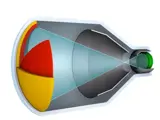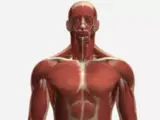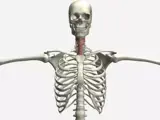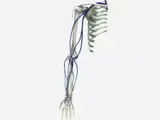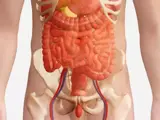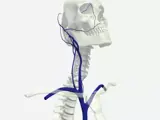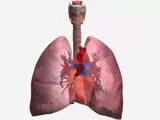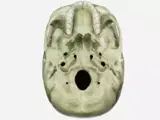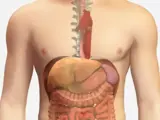This theory module provides an introduction to digital image acquisition, display and storage. It offers students and practitioners an understanding of the technology involved in digital radiographic imaging and storage systems, including digital fluoroscopy equipment. It also covers quality control and the systematic management of patient radiographic data using PACS. This module is an ideal resource if you are studying for the American Registry of Radiologic Technologists® (ARRT) registry exams.
Digital Radiography and Fluoroscopy, Image Viewing and PACS, and Quality Control
Radiography Theory
Materials Included

Text

Video

Quiz
This theory module provides an introduction to digital image acquisition, display and storage.
Introduction
Step 1 - Digital radiography
Step 1.1 - Image acquisition
Step 1.2 - Equipment
Step 1.2.1 - Flat-panel detectors
Step 1.3 - Grid
Step 1.4 - Collimation
Step 1.5 - Patient radiation dose
Step 1.6 - Digital mammography
Step 1.7 - Advantages of digital radiography imaging system
Step 2 - Digital fluoroscopy
Step 2.1 - Digital fluoroscopy equipment
Step 2.1.1 - X-ray tube and generator
Step 2.1.2 - Digital fluoroscopy with image intensifier and CCD
Step 2.1.3 - Digital fluoroscopy with flat-panel detector
Step 2.2 - Advantages of flat-panel detectors
Step 2.3 - Digital subtraction angiography
Step 2.3.1 - Digital subtraction equipment
Step 2.3.2 - Image acquisition
Step 2.3.3 - Temporal subtraction
Step 2.3.4 - Energy subtraction
Step 2.3.5 - Roadmapping
Step 2.3.6 - Patient radation dose
Step 2.4 - Post-processing
Step 2.4.1 - Windowing
Step 2.4.2 - Edge enhancement
Step 3 - Digital image viewing and picture archiving and communication system (PACS)
Step 3.1 - Display and viewing of the digital image
Step 3.2 - Photometry
Step 3.3 - Digital display monitor
Step 3.3.1 - Active matrix liquid crystal display
Step 3.3.2 - Advantages of an AMLCD over a CRT
Step 3.3.3 - Disadvantage of an AMLCD over a CRT
Step 3.3.4 - Advantages of soft copy over hard copy images
Step 3.4 - Picture archiving and communication system
Step 3.4.1 - Components of picture archiving and communication system
Step 3.4.2 - Image compression
Step 3.4.3 - PACS workflow
Step 4 - Digital display and imaging system quality control, and artifacts
Step 4.1 - Daily routine checks
Step 4.2 - Weekly checks
Step 4.3 - Monthly checks
Step 4.4 - Digital display quality control
Step 4.4.1 - Luminance testing
Step 4.4.2 - Distortion testing
Step 4.4.3 - Reflection testing
Step 4.4.4 - Luminance response
Step 4.4.5 - Digital display noise
Step 4.5 - Image artifacts
Step 4.5.1 - Computed radiography image receptor artifacts
- Describe the capture, coupling, and collection stages of each type of digital radiographic imaging system.
- Discuss the use of silicon, selenium, cesium iodide, and gadolinium oxysulphide in digital radiography.
- Describe the parts of a digital fluoroscopy system and explain their functions.
- Outline the procedures for temporal subtraction and energy subtraction.
- Describe the effect of conditions such as luminance and ambient lighting on viewing digital images.
- Compare the advantages and disadvantages of hard and soft copy images.
- Describe the Picture Archival and Communication System (PACS) and its function, including differences between the Hospital Information System (HIS), Radiology Information System (RIS), and Digital Imaging and Communications (DICOM).
- Describe data flow and networking between systems.
- Discuss the systematic management of patient data and errors that may occur in the workflow when utilizing the digital system.
- Discuss the quality control test and preventive maintenance schedule used for digital display devices.
- Explain how digital image artifacts occur and how to avoid them.
- Analyze the use of an image histogram and look-up table (LUT) in digital image artifacts.
- Explain the Patient's Bill of Rights, Patient Privacy Rule (HIPAA) and Patient Safety Act.
The SIMTICS modules are all easy to use and web-based. This means they are available at any time as long as the learner has an internet connection. No special hardware or other equipment is required, other than a computer mouse for use in the simulations. Each of the SIMTICS modules covers one specific procedure or topic in detail. Each module contains:
- an online simulation (available in Learn and Test modes)
- descriptive text, which explains exactly how to perform that particular procedure including key terms and hyperlinks to references
- 2D images and a 3D model of applied anatomy for that particular topic
- a step by step video demonstration by an expert
- a quiz
- a personal logbook that keeps track of all the modules the learner has studied and how long
